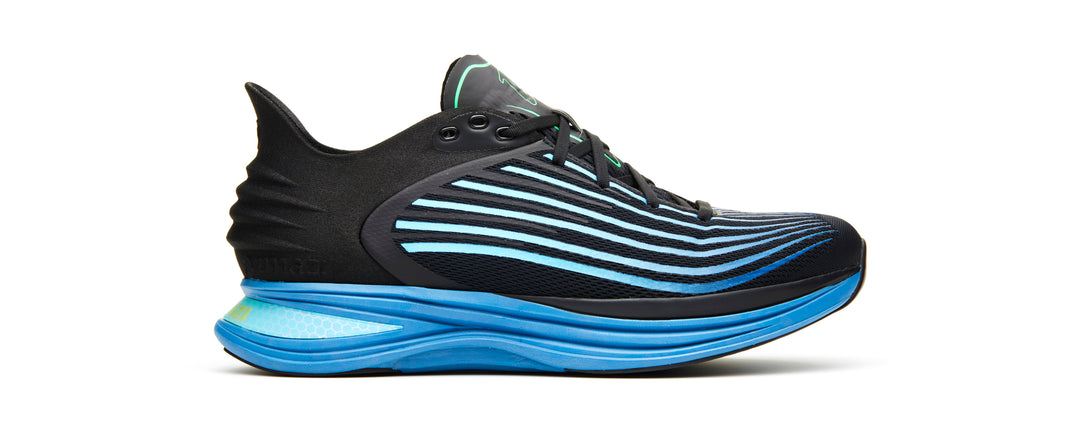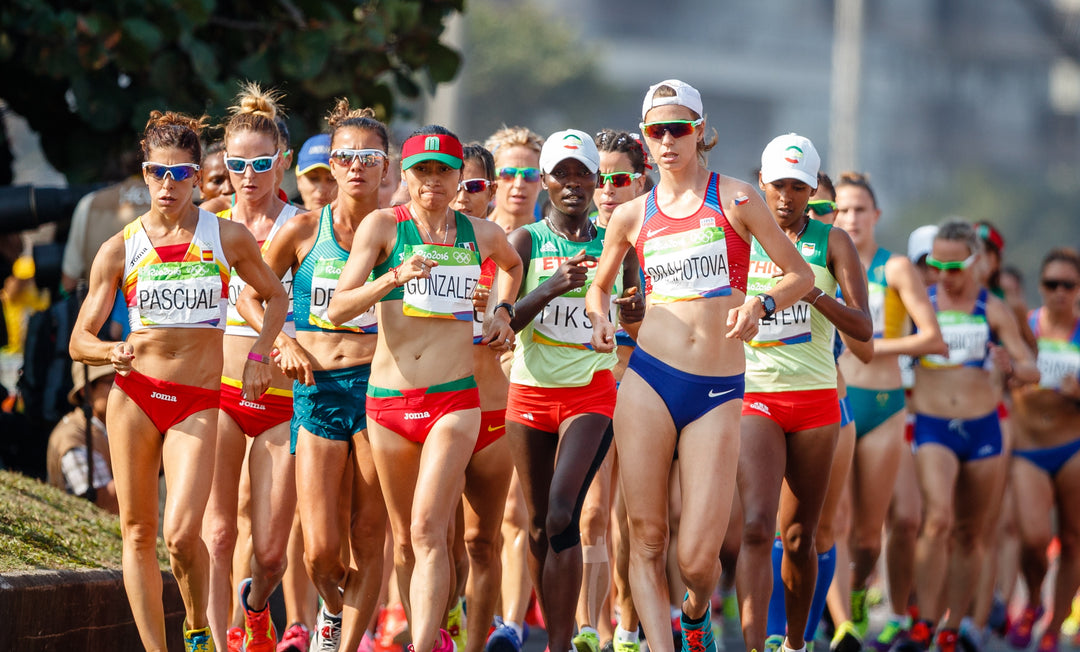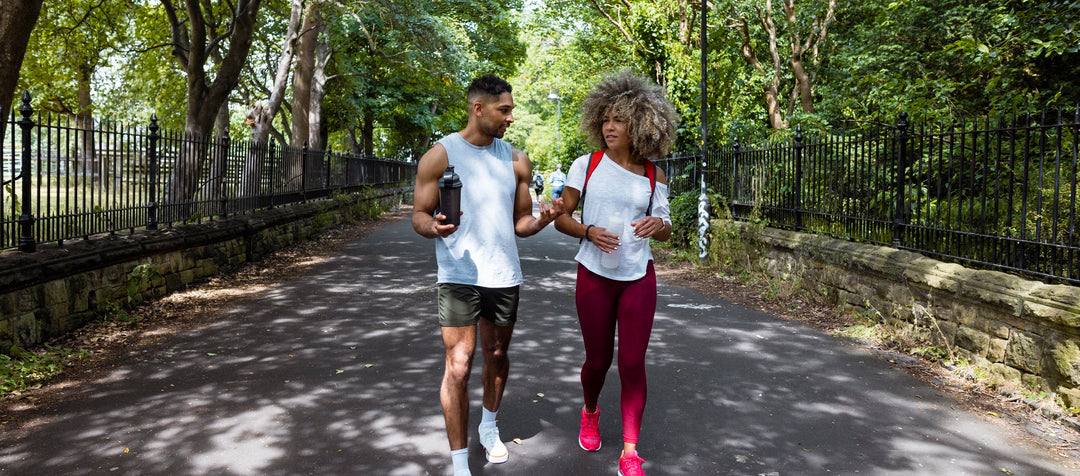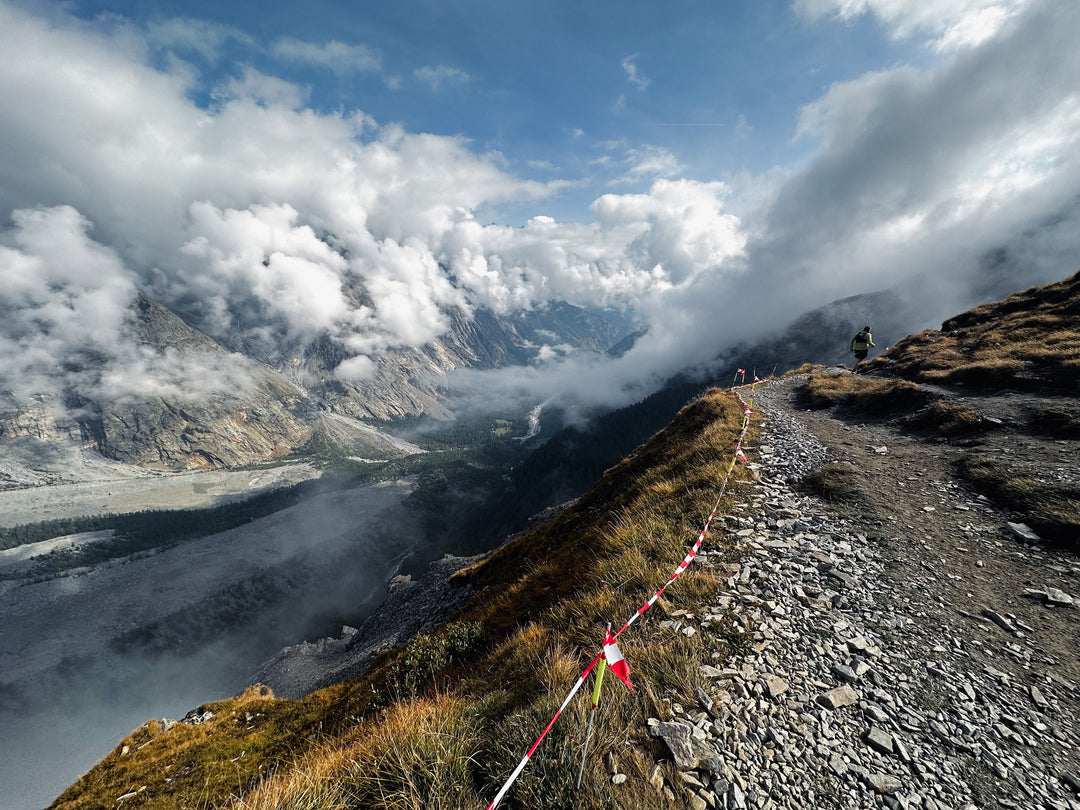In 2017, around the time that Nike was working on their Breaking-2 project, I was struck by an early morning thought while jogging to the track to meet my interval workout group. It was 5am on a dark, drizzly Tuesday morning, if you really want to know.
The thought hit me like this: I bet I could design a running shoe that did a better job of returning energy if I engineered the midsole to respond to the forces placed on it while running. I was only half-right. Yes, the forces you generate change with how fast you run. No, you can't manipulate a shoe to return energy in running. Why? I was to discover that running isn't the bouncing motion many have modeled it to be. It's a controlled, choreographed sequence of two legs that expend energy to get each stride just right. Inserting energy return into this motion violates the laws of physics. That's a big problem for energy-return advocates.
Just a brief aside, in an otherwise very long post; I’m a lifelong runner and I’ve spent my career making footwear for runners. Only to say that thinking about making shoes wasn’t a random Tuesday morning thing.CHECK OUT OUR WOMEN'S SHOES | CHECK OUT OUR MEN'S SHOES
Could there be a way to lose less energy during a stride? Perhaps help the joints articulate more efficiently or with less torque? Or improve the timing of muscle firing? Could certain foam properties or other materials influence how the body works and save a few Calories? The answer turned out to be “no”, but it took a while to get there.
Like everybody else in the world and the hundreds of published papers, I assumed that running incorporated spring-like motions. And if springs were involved, then maybe there would be a harmonic resonance associated with particular stride lengths and cadences (i.e. paces). If you could engineer a shoe to match a resonance frequency, then you could get much more energy return. Or so the thinking went...
Meanwhile, I started working with my high school running friend John to come up with the best way to tell our “resonance frequency means more energy return with pace tuned shoes” story. The story improved and the partnership clicked, so John and I decided to start Vimazi. After incorporating, we rallied a few friends and family members to invest in the company as we pursued the idea.
At the same time, I worked on getting the formulas to do the engineering so I could build a prototype shoe and test it. I read every research paper and book on the subject, but nobody had published formulas to predict forces; there were only incomplete models to relate springs to running. Not to be stymied, I started working out the math and physics for myself. But I found a big problem: When I used real numbers as inputs (there are lots of force measurements published), I couldn't get a result that made any sense. What I mean is that the properties of a spring in a shoe didn't result in anything that looked like the running measurements that anyone else had made. My numbers for resonance were off by a factor of 5. That's a gigantic discrepancy, and it was a low moment for me. Either I didn't know how to do the simple math for damped harmonic motion (which anyone can lookup online), or I was barking up the wrong tree. Hand on forehead! How do I break the news to John and the investors?
Back to the drawing board. If it isn't harmonic motion, (that’s what you get when you bounce on a spring) then what’s going on? We aren’t talking about what happens inside the body, we’re talking about a shoe made of a simple bouncy material. If energy return is equal to harmonic motion, and if harmonic motion doesn't result in anything close to real-world measurements, then what is energy return?
Another thought struck, and it struck hard. Maybe there’s no such thing as energy return in running. Maybe there is just shock absorption and propulsion. And if so, can a shoe be engineered to have a beneficial effect?
Yes it can! But the plot thickens, because human feet are very peculiar. You thought this was going to be easy, right? Sorry.
The total energy to move your body (a mathematical equation involving time) is part of the problem. How the forces are transmitted through your feet is another story. You won’t be surprised to know that there is a difference between what happens under the heel and under the forefoot. Humans have this big bone, the calcaneus, and an anatomy that lifts the heel off the ground half way through the stride. It’s called plantigrade and is very different from dogs and cats (digitigrade). It is also very different from an artificial leg made for running that has a single pad as a “foot”. Since a shoe midsole only reacts to the forces directly on top of it, there are different forces on heel of the shoe than on the forefoot. Dramatically different. Here is the absolute key to the whole subject: the amount of energy on the heel at impact is significantly less than the energy pushing off the forefoot. We can determine the relative forces in the heel and forefoot as matters of pace, strike pattern, cadence, and terrain. Shock absorption turns out to be related to the ratio between heel and forefoot. Nail down that ratio and you can engineer how much shock to absorb.
Shock absorption matters a lot to runners, because repeated shock causes aches and pains. For me, the holy grail of running shoe design is to ease the stresses that cause pain and may lead to injury. I figured that stress relieving shoes would be a perennial favorite. Good news investors! With this understanding of the physics of human running, the mission of Vimazi went from chasing an imaginary dream, to delivering something of exceptional value: health and happiness.

A very early prototype
Stage two was to put the theory to the test and actually engineer a shoe and test it. And then Covid hit. We had countless delays in designing, prototyping, and commercializing our first six models. You’ve heard all about the supply chain slowdowns, and we suffered from that for sure. It didn’t help that we were tiny and unproven, and couldn’t visit our suppliers and manufacturing partners in China.
As the delays extended, we needed something to focus on so we spent our time writing and publishing an interval training book, Running in Circles. We also built a unique training plan app called RunCrush, which was well-received on launch though we’ve had to back-burner it for the moment as we focus our efforts and watch our bank account.
Meanwhile, the rest of the running world has been convinced that ultra thick shoes with bouncy foam and carbon plates make you run faster. Some even say it’s a form of cheating. All without theory or proof, only causation fallacy. (We won’t digress into the fundamental problems with the analyses of marathon finish times or with the experimental designs in the running economy studies.)
Despite the interminable supply chain delays, we were able to develop the initial styles, tuned for different types of people (fitness runners and walkers to elites), and test them against our math equations. The data store a trove of new insights, all of which are predicted by the math. But the best part has been experiencing the benefits of more shock absorption without compromising on stability.
The Z30 and Z60 fit the same
Every iteration along the way needed to be carefully tested. We spent a lot of time running on each model, and fine-tuning the fit, feel, and ride. Eyelets, heel components, toe design, laces, midsole finishing and much more had to be reevaluated numerous times. By the end, the shoes have been tested in the Boston, London, Portland, and San Antonio Marathons, as well as in countless smaller races and training runs by runners of all abilities.

Successful San Antonio Marathon in the Z50s
Finally, after almost five years, the world’s first tuned shoes have been completed and are on the way to our warehouse near Detroit. Woof! As we wait for them to arrive, John and I are looking at each other wondering what the next leg of the run is going to look like. We can’t wait.
More About Vimazi
Here’s what Vimazi does
We make tuned running shoes that provide better cushioning and more stability than previous generations of running shoes.
The physics of tuned shoes
Back in 2017, while Vimazi CEO Scott Tucker was running to his 6am interval workout, he had an idea. A shoe made for specific pace, he thought, might offer better cushioning and more propulsive stability than a generic shoe that wasn’t “tuned” for running.
It took three years to fully understand the physics of human running, and how the forces are transmitted. When we finally understood the physics, we developed the equations that predict running forces. We’re now able to calculate the exact impact force and propulsion force, in Newtons, for any pace, including variations for height, weight, and cadence. (A Newton is a metric unit of force.) Data from the running trials we conducted aligned with the force calculations we got from the physics.
Knowing the precise impact and propulsion forces and the factors that influence them, allowed us to create shoe models for different needs. After several years of work, we’d derived the equation to calculate the exact forces in running and in walking, under specific regions of the foot, and for any pace, weight, cadence, or stride length. To create our patented midsole tech, we had to solve an even more complex puzzle. We had to find the mechanisms and formulae to identify impact from propulsion forces and how they vary with strike pattern. To put all this knowledge into a shoe required more than foam properties, it required special attention to the shapes in the heel and toe, to the stack heights, and to the drop from heel to forefoot.
The enormous amount of data collected during our research corroborates the fundamental physics. No hand waving, conjecture, or anecdotes. And unlike the hyperbole promoted as shoe-tech over the last few years, Vimazi’s tuned technology rests on fundamentals and common-sense.
The problem with previous gen running shoes
Most running shoes have the same foam density from heel to toe, and they compromise on both shock absorption and stability. To make sure you get all the cushioning you need as well as all the stability to protect your knees and ankles, you need a shoe that’s tuned specifically in the heel than the forefoot to the unique biomechanics of running.
The Vimazi solution
Our solution to this running shoe problem was to create something that's never been done before—tuned running shoes that deliver both more shock absorption and better stability. In 2023, after years of testing, we launched seven road shoe models that span the needs of runners from beginner to elite. By changing the paradigm for midsole design, we’ve been able to deliver better impact cushioning and propulsion stability for every runner.
25 years experience
We’ve taken everything we learned making running shoes for 25 years—and running marathons for even longer—and elevated it to a whole new level with pace tuning. It offers a better and more personal running experience. We were instrumental in creating shoes for Montrail, Scott Sports, and Pearl Izumi. We learned even more while owning a specialty running store and organizing running events.
A marathoner’s fit
Running shoes can have the best tech, but if they don’t fit well, nobody will wear them. We wouldn’t either! Not only have we spent our careers perfecting innovative fit technologies at other companies, notably at Montrail, we’re also life-long marathon runners ourselves. So we understand fit and know how critical it is, from heel to toe. Each of our models has been painstakingly designed and built with the perfect fit in mind. They’ve also been extensively road tested since 2019, including at the Boston, London, Portland, Missoula, San Antonio, and Two Oceans Marathons. We think you’ll love them.










